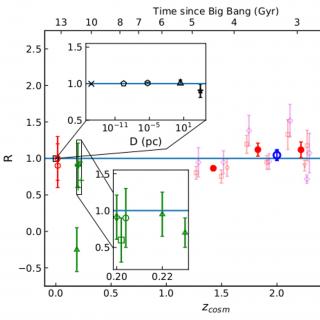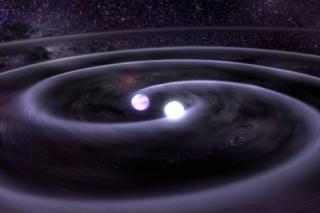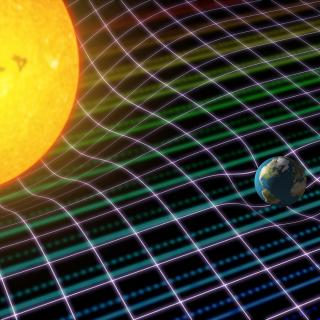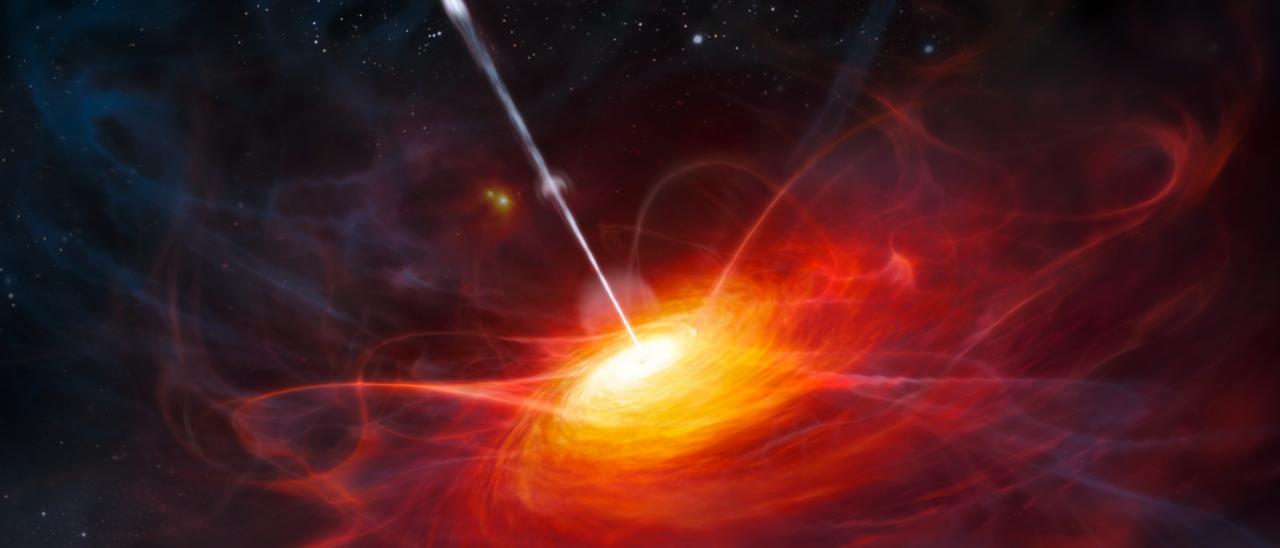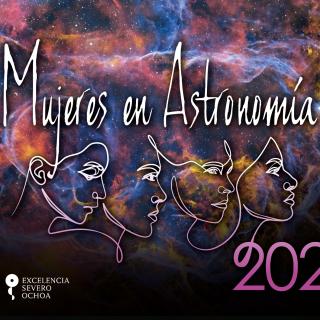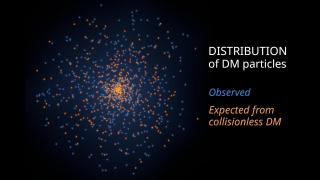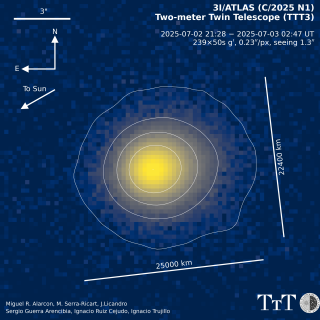According to Einstein’s theory of general relativity gravity affects light as well as matter. One consequence of this theory, based on the Principle of Equivalence, is that the light which escapes from a region with a strong gravitational field loses energy on its way, so that it becomes redder, a phenomenon known as the gravitational redshift. Quantifying this gives a fundamental test of Einstein’s theory of gravitation. Until now this test had been performed only on bodies in the nearby universe, but thanks to the use of a new experimental procedure scientists at the Instituto de Astrofísica de Canarias (IAC) and the University of Granada have been able to measure the gravitational redshift in quasars, and thus extend the test to very distant regions from where the light was emitted when our universe was young.
Einstein’s Principle of Equivalence is the cornestone of the General Theory of Relativity, which is our best current description of gravity, and is one of the basic theories of modern physics. The principle states that it is experimentally impossible to distinguish between a gravitational field and an accelerated motion of the observer, and one of its predictions is that the light emitted from within an intense gravitational field should undergo a measurable shift to lower spectral energy, which for light means a shift to the red, which is termed “redshift”.
This prediction has been well and very frequently confirmed close to the Earth, from the first measurements by R.V. Pound and G.A. Rebka at Harvard in 1959 until the most recent measurements with satellites. It has also been confirmed using observations of the Sun, and of some stars, such as our neighbour Sirius B, and the star S2 close to the supermassive black hole at the centre of the Galaxy. But to confirm it with measurements beyond the Galaxy has proved difficult, and there have been only a few tests with complicated measurements and low precision in clusters of galaxies relatively near to us in cosmological terms.
The reason for this lack of testing in the more distant universe is the difficulty of measuring the redshift because in the majority of situations the effect of gravity on the light is very small. For that reason massive black holes with very strong gravitational fields offer promising scenarios for measuring gravitational redshifts. In particular the supermassive black holes found at the centres of galaxies, which have huge gravitational fields, offer one of the more promising scenarios to measure the gravitational redshift. They are situated at the centres of the extraordinarily luminous and distant quasars.
A quasar is an object in the sky which looks like a star but is situated at a great distance from us, so that the light we receive from it was emitted when the universe was much younger than now. This means that they must be extremely bright. The origin of this huge power output is a disc of hot material which is being swallowed by the supermassive black hole at its centre. This energy is generated in a very small region, barely a few light days in size.
In the neighbourhood of the black hole there is a very intense gravitational field and so by studying the light emitted by the chemical elements in this region (mainly hydrogen, carbon, and magnesium) we would expect to measure very large gravitational redshifts. Unfortunately the majority of the elements in quasar accretion discs are also present in regions further out from the central black hole where the gravitational effects are much smaller, so the light we receive from those elements is a mixture in which it is not easy to pick out clearly the gravitational redshifts.
The measurements cover 80% of the history of the universe
Now a team of researchers at the Instituto de Astrofísica de Canarias (IAC) and the University of Granada (UGR) have found a well defined portion of he ultraviolet light emitted by iron atoms from a region confined to the neighbourhood of the black hole. “Through our research related to gravitational lensing, another of the predictions of Einstein’s theory of General Relativity, we found that a characteristic spectal feature of iron in quasars seemed to be coming from a region very close to the black hole. Our measurements of the redshift confirmed this finding” explains Evencio Mediavilla, an IAC researcher, Professor at the Unversity of La Laguna(ULL) and first author of the article.
Using this feature the researchers have been able to measure clearly and precisely the gravitational redshifts of many quasars and, using them, estimate the masses of the black holes. “This technique marks an extraordinary advance, because it allows us to measure precisely the gravitational redshifts of individual objects at great distances, which opens up important possibilities for the future” says Mediavilla.
Jorge Jimenez Vicente, a researcher at the UGR, and co-author of the article, stressess the implications of this new experimental procedure, as it allows comparison of the measured redshift with the theoretcially predicted value: “this technique allows us for the first time to test Einstein’s Principle of Equivalence, and with it the basis of our understanding of gravity on cosmological scales.”
This test of the Principle of Equivalence performed by these researchers is based on measurements which include active galaxies in our neighbourhood (some 13,800 million years after the Big Bang) out to individual quasars a large distances, whose light was emitted when the age of the universe was only some 2,200 million years, thus covering around 80% of the history of the universe. “The results, with a precision comparable to those of experiments carried out within our Galaxy, validate the Principle of Equivalence over this vast period of time” notes Jiménez-Vicente.
The article has been published in the journal The Astrophysical Journal, and recently has been selected by the American Astronomical Society which as published an inverview with the researchers in the section “AAS Journal Author Series” of its YouTube channel, whose aim is to link the authors with their article, their personal histories, and the astronomical community in general.
Article: Mediavilla, E.; Jiménez-Vicente, J. (2021). "Testing Einstein's Equivalence Principle and Its Cosmological Evolution from Quasar Gravitational Redshifts". The Astrophysical Journal. 914: 112. DOI: 10.3847/1538-4357/abfb70. arXiv: 2106.11699
Interview of the American Astronomical Society:
https://youtu.be/AwPFasJQr2Y
Contact at the IAC:
Evencio Mediavilla: emg [at] iac.es (emg[at]iac[dot]es)
